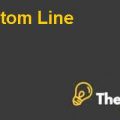Crafting winning strategies in Mature Markets Case Study Solution
Executive summary
The case illustrates the market conditions and industry trend of wine and its consumption. In 2001, the US wine industry faced immense competition and consolidation of wine types which gave rise to the competitive environment, causing many players to enter while also leaving the market. It demonstrates how the competition and saturation of the market effects the demand and simultaneous supply of the wine. It also discusses the competitive advantage of the companies who have strong distributors and the retail markets which have strong customer base and high footfalls. Since the market of US is extremely competitive with saturation in two segments – premium and low tier, the profits and market share of the companies have shrunk and made the entry of new entrants difficult in terms of sustainability.
In order to deal with these issues, the case presents following recommendations for the new entrants to enter the market while also for the existing player who are facing shrunk en profits. In order to enter the market, the new entrant should target the market segment that exists between high and low tier market. It should use strong advertisement campaigns to engage the perception of the non-user of wine which will give a totally new market to the new entrant. Also it should focus on developing a blue ocean strategy rather than following the path of old players.
For existing player, the players should focus on developing the strategy based on cost leadership and economies of scale. Because it will help them to align themselves with the business strategy of the distributors and the retail marketers. Hence will enable them to target maximum number of consumers with no discrepancy in the supply chain.
Introduction
The US wine industry is facing immense competition which is leading to lesser market shares and profits .The industry is divided into two tiers namely the premium and low end tier. The premium market functions on differentiation strategy while the low tier functions on cost leadership leading to economies of scale.
The wine is categorized premium or low in terms of the origin it belongs to, however the US market did not know the difference among any type of wines which lead to low consumption and brand value for wines. In addition, the US market is the 4thbiggest producer of wine and ranked as 34thin wine consumption. The ranking depicts a severe loophole in positioning of wine in the mind of the consumer.
Furthermore, sine the US market consumption rate decreased, the supply of distributors decreased, making the bargaining power of the distributor high and producers to change their pricing strategy. The deadlock aside, when the distributor enforces the producers to lower the price in order to achieve the economies of scale, it misaligns the business strategy of the producers due to low profits and revenues. Also 70% of the US wine producers targeted low tier segment while only 30% targeted the premium wine consumers in US market. The monopoly of 70% wine producers hindered the operational and functional activities of the premium producers, making market extremely fierce and competitive.
Problem Statement
- The shrinking market share of the existing players (wine producers) - attributed to the low consumption of the target market and the unawareness about the product . Also a big market doesn’t consume wine, due to wrong brand perception. Hence making the market share shrink, effecting the profits and also the sustainability of the companies.
- Inappropriate brand positioning and consumer perception, making consumers to switch and consume beer over wine.
- Absence of advertisement to derive and build strong brand positioning and value in the mind of the consumer.
Analysis
1) Industry Attractiveness
Porter 5 forces Model
Bargaining power of Buyer-High
The bargaining power of the buyer is high in the industry because of the availability of other substitutes like beer and liquor, offering consumers a wide variety of drinks to consume instead of Wine. Also, more wineries are entering the market due to low barriers to entry making the market competitive and intense. In addition due to the availability of low cost grapes, more producers are shifting the target segment. Also due to less popularity and trend in the market regarding wine, the production has surpassed the consumption by 20%, thus applying the economic approach of high supply low demand which makes prices low. With this, the switching cost is also low which enhances the power of buyer over the company.
Bargaining power of Supplier-Low
The bargaining power of the suppliers is low, because the wineries have their own lands and vineyards that gives them control over its production line and also the distribution. Moreover due to over-production of wine and low consumption, the suppliers have low power to bargain with the company. Also, the market has availability of cheap lands, making it easy to be equipped by the companies. Lastly, there are more supplier sin the market than the consumption of the market.
Threat of New entrant- High
The threat of new entrant is high, because of the low barrier to entry into the market. In addition due to the availability of equipment and land at low price, the set up cost is also low, which makes the investment less risky .Also, due to the presence of untapped segments, the market is attractive to the new entrants.
Threat of Rivalry-High
The extent of rivalry is high as many of the US wineries have entered the same markets and serving the same target market. Since the consumers are already low, the trend is making the companies fight severely on price cut strategies to gather more market share. In addition, large companies which have strong financial back, tend to hinder the path of small retailors with strong distribution hold.
Threat of Substitution-High
The threat of substitution is also very high because of the availability of other beverages like beer and liquor which are more popular among the maximum population share of US. In Addition, since wines associated with premium-ness and seniors of the market, hence other substitutes like beer and liquor (which are famous among youth) posits great threat to wine producers.
2a) EXISTING PLAYER STRATEGY
The existing players are facing immense pressure from distributors and retail market’s to lower the prices, also these companies are facing low growth due to high substitution and low consumption of wine. These factors can be attributed to consumer buying behaviors, preferences, choices and perception regarding the product. So in order to deal with the issue and sustain in the market, the companies should:
Crafting winning strategies in Mature Markets Harvard Case Solution & Analysis
- Lower the prices of the wine. In doing so, they should start by managing the backward integration of the supply chain. The companies should lower their overhead costs and other operational costs that would allow them to set higher prices and meet the level of distributors. This will allow them to create strong long term relations with the distributors that will guarantee the sustainability of business. In short, the company needs to reestablish its distribution strategy and relationship with the distributors.(Huebsch, 2011), (Mayson Meyer, 2014)
- Since the companies have strong financial background and utilizes small amount on advertisement, the companies should invest heavy into advisement to increase the product visibility and also create a place in “top of mind”. In addition to this, the companies should offer long term free trials of wine, to increase a demand. It will also allow the companies to understand the taste of the market and identify the loopholes in their existing offerings.
- The companies should sustain their position and market share by developing a separate product for all three tiers of the market. In doing so, it should launch small wine bottles that are placed besides the beer shelf space, to tap the customers who consume beer. It will allow the company to sustain its market share and thus the profitability.(Llopis, 2013),....................
This is just a sample partial case solution. Please place the order on the website to order your own originally done case solution.










